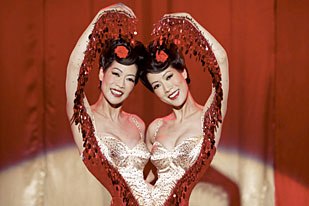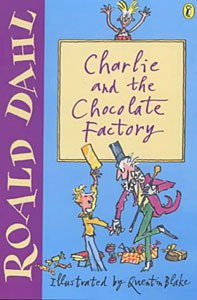Bill Desowitz sits down with Tim Burton and talks with the director about Big Fish and the pros and cons of a digital world.

Tim Burton on the set of Big Fish. All images, unless otherwise noted, © Columbia TriStar. All rights reserved.
Famed director and former Disney animator Tim Burton was more than happy to enhance the fantastical Big Fish with in-camera tricks, models, puppets and occasional computer animation, such as the big catfish. Burton recently spoke to VFXWorld about the Columbia movie, which opens Dec. 10 in L.A., N.Y. and Toronto, expands Christmas Day and goes wide Jan. 9, 2004. Big Fish, which blurs fantasy and reality while weaving a compelling father-son saga, features vfx by Sony Pictures Imageworks.
Bill Desowitz: The use of CGI here is very restrained.
Tim Burton: Like anything CG, I like to have as much of it be sets and real. If you can do anything [digitally], then why bother being there. I dont care what anybody says, but the closer you can get where it is, the better.
BD: Its getting to that point where there are creative choices now where you question: Why are they creating a CG environment for this when they could just shoot it?
TB: Yeah, exactly. Like I said, everything we tried to do is to kind of enhance.
BD: Even with the twin sisters, youre not really sure that they are digitally conjoined.

Subtle use of CG helps conjoin these twins.
TB: That was the fun of it, because its about stories and stuff and I didnt want it to get too [overdone] cause I have a problem with some CG anyway. We have some effects that are CG, but its real minimal. Even with the conjoined twins, we didnt do a lot of CG. The more you can do yourself, the better because it [cumulatively] loses impact. You know, somewhere in your brain its not real. So there was a kind of funkiness and hand-made, old-fashioned feel that was appropriate to this anyways. The digital timing and digital effects that we have, we tried to base it on something weve done to solidify the look we were after. I could see you could go too far with this, so we tried to keep it where it fit the material.
BD: Do you think filmmakers are overdoing CG?
TB: Yeah, most tools are great, but like anything else, you can go overboard. CG seems to work really well with animated films because its consistent. But theres something about doing it with live-action where you know that anything can be done so somehow its lost a little of its you look at an old James Bond movie and theres this visceral thrill about seeing somebody do their own stunt, whereas you lose something knowing that it was done in CG. Consciously, it somehow affects what you see, I believe.
BD: And you didnt want it to get in the way of the storytelling.
TB: No, Ive just always felt like its not Lord of the Rings; were not going to set the world on fire by showing giants. Its more about the juxtaposition of things, I think, and thats what I felt it had going for it. So weve tried to go for just doing as much simple [effects] in-camera and shot more on location [in Alabama and Paris] so that it had its own reality.

A blend of forced perspective and visual effects helped bring this scene to life.
BD: But with the whole blurring of fantasy and reality, isnt Big Fish your Wizard of Oz?
TB: No, I never think that way and part of the joy of working on this is that I couldnt define it in any way. Theres a whole gray area to whats true and not true in life and how things are perceived. So visually I wanted to tie reality and fantasy together slightly so theres a very stream of conscious way of going in and out of reality. Its an exploration all the way through and its nice to keep it simple. The same with the digital timing.
BD: I noticed a fair amount of digital color grading, particularly in the fantasy sequences where theres desaturation or oversaturation and contrast tweaking to enhance the mood. Have you done much of that before?
TB: No, I never have. I love it. Its so great.
BD: More precise?
TB: Well, yeah, you know its like anything I think people can use it for good or evil.
BD: Lord of the Rings is a perfect example of how theyve really pushed digital grading.
TB: Its like a few years ago they said, Youre making a comedy; you dont need stereo. Its a tool. Like anything youre doing: acting, lighting, color it should serve it.

More giant effects from Burtons imagination.
BD: What about previs? Do you do much of that, given your animation background?
TB: A little bit. We have a few sequences in which we did some previs and thats helpful. Somehow its a little quicker than drawing lame little foxes by hand.
BD: But there are little things that go on in that wonderful antebellum house as its transformed to its former glory.
TB: Yeah, again, its like in the world theres always these symbols in each culture and each set of whatever mythologies or folktales these types of characters [witches, giants, conjoined twins] are classic symbols that way.
BD: Whats your relationship like with visual effects supervisor Kevin Mack?
TB: Its good. I mean, he gets the idea that its just there to serve.
BD: Did he come in thinking that it might be different?
TB: I dont know. I dont think so. He seemed pretty open and didnt come in with too many preconceived notions.
BD: What were some of your ideas specifically?
TB: Well, because we didnt have a huge effects budget, we tried to do things kind of split-screen, in-camera, lighting tricks, smaller props. Transitions and things that would be treated like a special effect.

Burtons The Nightmare Before Christmas has become an animated cult classic. © 2000 Touchstone Pictures All rights reserved.
BD: And you used forced perspective with the giant.
TB: Well, we did a little bit to make him bigger. We took what we had and then we just tried to push it a bit further
BD: What we can expect from The Corpse Bride, the stop-motion movie youre producing next year?
TB: Were still working on it. It will be a companion piece to The Nightmare Before Christmas, but with more human characters.
BD: Will the technology be more advanced?
TB: Well, you know, theres something about the hand-made thing if youre ever over in London, you can come over here and visit the energy where you see sets and moving puppets, and well have to wait and see how it translates to the screen computers are different. They have a different vibe. You get another vibe when you walk onto a bluescreen set. You try to go with whats right for each particular project.
BD: All this talk of the death of 2D must make you laugh.

Burton will next take on the task of adapting Roald Dahls beloved childrens book to the big screen.
TB: Yeah, well, Lilo & Stitch did OK. The moment they say somethings dead, you know theyre wrong.
BD: And what about Charlie and the Chocolate Factory?
TB: By the stories you read in the papers, youd think Ive already finished it. So its a bit premature.
BD: But it wont be effects heavy.
TB: No, Ill rely as much on the practical as I can.
BD: Are you worried at all about taking on another icon?
TB: Yeah, well, I should learn my lesson [after Planet of the Apes], but its OK.
BD: But it will be great for you to work with Johnny Depp again. Hes become your alter ego, and seems to possess just the right eccentricity and sweetness for Willy Wonka, dont you think?
TB: Hes real great and I obviously love working with him. I love people who are willing to become different people each time its real fun. But, you know, the fun of it is exploring, especially when youre dealing with not just icons but anything. You want that private time because when youre on the set, you dont have privacy, youve got this sort of immediate kind of quick response to things. But that time, to be private and think about it and develop it inside, I like to try to protect that as much as possible.
BD: Charlie will be a good transition for you after Big Fish, with its macabre story about kids and a mysterious father figure.
TB: Well, you know, theres a reason why hes looking for a son. Thats why its a classic. Its like a modern version of an old fable.
BD: And Big Fish is a fable about fables. And why were attracted to them.
TB: Yeah, Ive always been fascinated by how people perceive and even the terminology of fables and fairy tales and what they really are.


Burton is not alien to visual effects, which he used previously on Planet of the Apes and Mars Attacks! Planet of the Apes © 2001 20th Century Fox All rights reserved. Mars Attacks! © Copyright 1996 Warner Bros. All rights reserved.
BD: Kids get it immediately the underlying fear and other emotions. And now that youre a father, you can relive it all over again with your son.
TB: Its your first way to put abstract imagery and real feelings together and thats what its all about. Thats what I always felt. You know, when youre new to the world youre like, Whats that? Whats that? Whats that? So these stories, which are basically horror stories for children, are like, Oh, I dont understand that image, but I get the feeling of it. And thats exactly accurate.
Bill Desowitz is the editor of VFXWorld.com.







